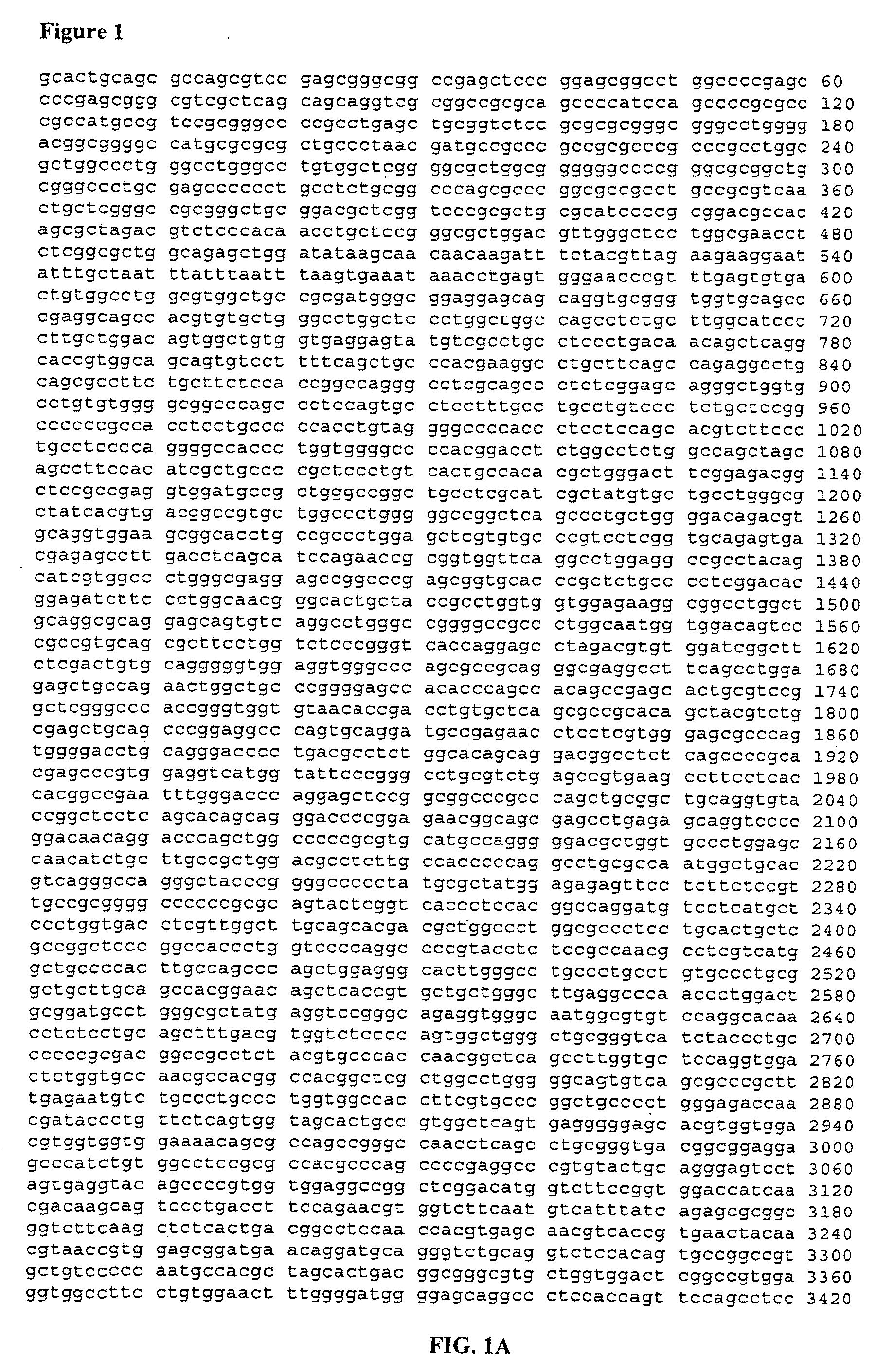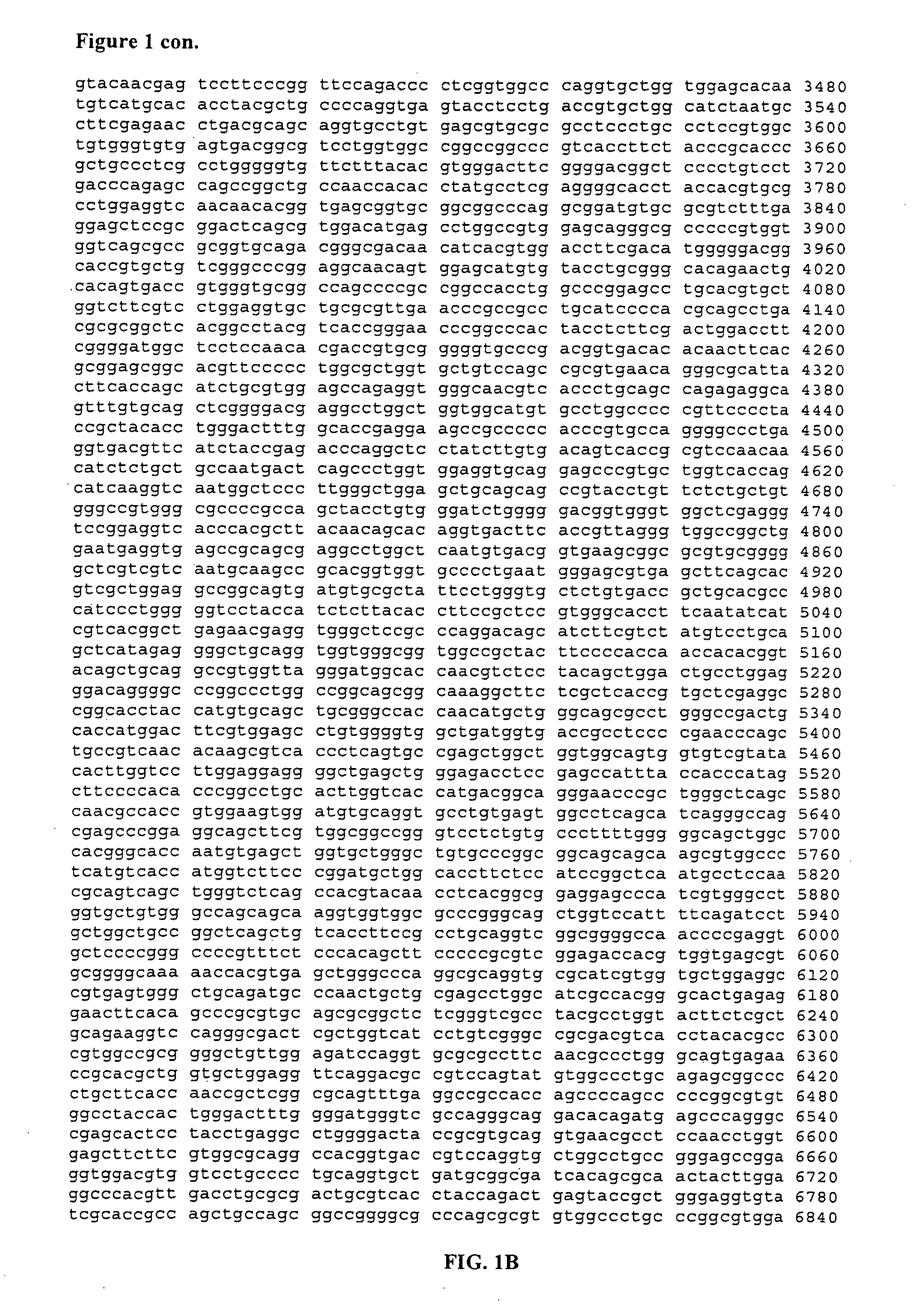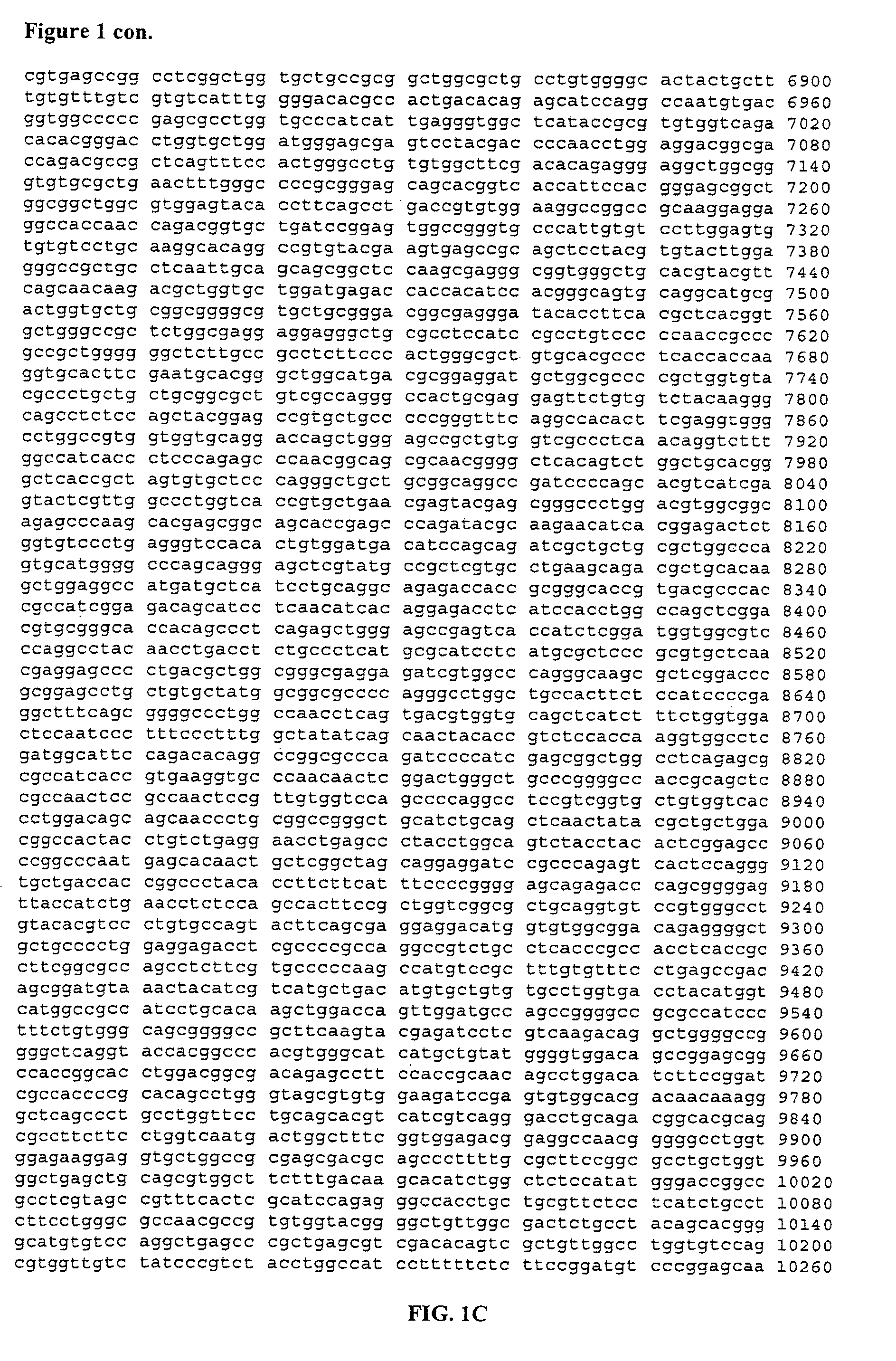Pkd mutations and evaluation of same
a technology of pkd mutations and mutation evaluation, applied in the field of pkd mutations and evaluation of same, can solve the problems of undetermined mutation detection rate, unfavorable routine clinical sample analysis, and unique set of challenges in gene testing for adpkd, and achieve the effects of facilitating diagnosis and management, reducing the cost of evaluation, and ensuring the effect of quality
- Summary
- Abstract
- Description
- Claims
- Application Information
AI Technical Summary
Benefits of technology
Problems solved by technology
Method used
Image
Examples
Embodiment Construction
[0019]The PKD genes are genomic DNA sequences that map to chromosomal position 16p13.3 (PKD1) or chromosomal position 4q21-23 (PKD2) and give rise to messenger RNA molecules encoding PKD1 and PKD2 proteins. The PKD1 and PKD2 genes comprise the sequences of SEQ ID NO:1 and SEQ ID NO:4, respectively, which include introns and putative regulatory sequences. Like many other genes, PKD1 and PKD2 gene sequences, when compared among individuals, show sequence variations that do not affect gene expression or expression and / or function of the gene product.
[0020]The PKD1 gene (e.g., GenBank Accession Number L39891, SEQ ID NO:7) spans about 54 kb of genomic DNA on chromosome 16 (16p13.3) and contains a 12,906 basepair coding sequence divided into 46 exons from which a 14 kb mRNA is transcribed. The protein product of PKD1, polycystin-1 (PC-1) (GeneBank Accession No. AAC37576, SEQ ID NO:3), is a 4303 amino acid protein with a predicted mass of 460 kDa which forms multiprotein complexes at the c...
PUM
| Property | Measurement | Unit |
|---|---|---|
| Fraction | aaaaa | aaaaa |
| Fraction | aaaaa | aaaaa |
| Area | aaaaa | aaaaa |
Abstract
Description
Claims
Application Information
 Login to View More
Login to View More - R&D
- Intellectual Property
- Life Sciences
- Materials
- Tech Scout
- Unparalleled Data Quality
- Higher Quality Content
- 60% Fewer Hallucinations
Browse by: Latest US Patents, China's latest patents, Technical Efficacy Thesaurus, Application Domain, Technology Topic, Popular Technical Reports.
© 2025 PatSnap. All rights reserved.Legal|Privacy policy|Modern Slavery Act Transparency Statement|Sitemap|About US| Contact US: help@patsnap.com



